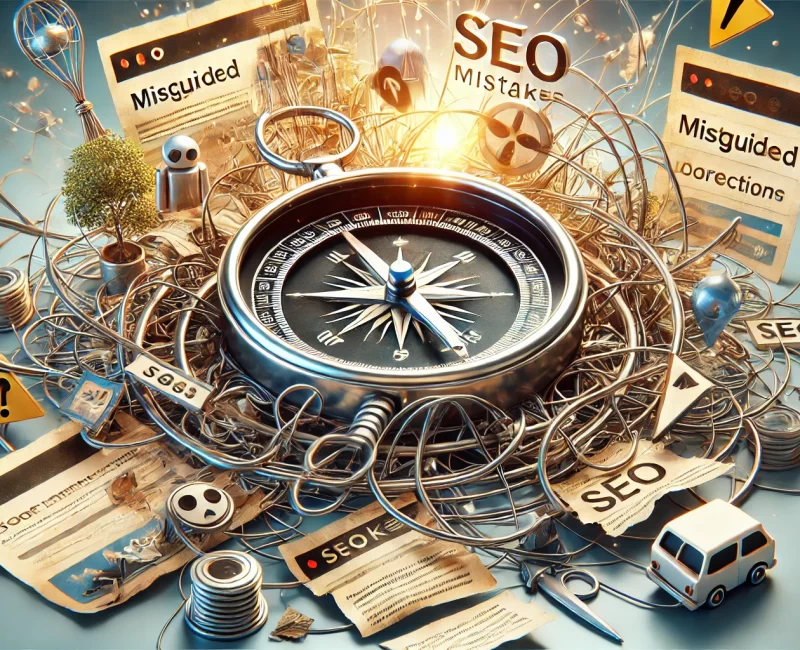
Hey there! It’s your friendly neighbourhood Spider-Man swinging in to give you a web-slinging tour of the history of the World Wide Web (WWW). The internet may not be crawling with supervillains like New York, but trust me, there’s a lot going on behind the scenes. Just like I fight crime across the city, countless engineers, scientists, and dreamers have been battling to make the web what it is today—a sprawling, interconnected network that’s become part of our everyday lives.
Ready to get tangled in the fascinating story of the web? Let’s swing through its history, from its humble beginnings to its web-slinging transformation into the global powerhouse it is today!
- Before the Web: The Early Roots of Networking
- The Birth of the World Wide Web: Spinning the First Webs (1989-1990)
- The Web Goes Public: Expanding the Network (1991-1993)
- The Web Boom: Into the Dot-Com Era (1994-2000)
- Web 2.0: The Rise of Social Networks and User-Generated Content (2001-2010)
- The Modern Web: A Web-Connected World (2010-Present)
- Conclusion: A World-Wide Web of Heroes
Before the Web: The Early Roots of Networking
Before the World Wide Web, the internet was like a city full of skyscrapers with no bridges connecting them. Back in the 1960s and 1970s, the internet wasn’t the global information-sharing tool we know today. It was primarily a network used by government researchers, universities, and tech-savvy superheroes—err, scientists.
ARPANET – The Grandfather of the Web (1969)
In the 1960s, during the Cold War, the United States Department of Defense needed a way to communicate between research institutions, even in the case of a disaster (imagine if the Green Goblin blew up communications systems!). Enter ARPANET (Advanced Research Projects Agency Network). ARPANET was the first packet-switching network, meaning it allowed data to be broken into smaller chunks (packets) and sent across different paths.
In October 1969, the first message was sent between computers at the University of California, Los Angeles (UCLA) and Stanford Research Institute. The message? “LO”—short for “login.” The system crashed before they could type “G,” which sounds like something that would happen if Doc Ock hacked it!
By the early 1980s, ARPANET had become the foundation of what we now call the internet, but the World Wide Web hadn’t spun its first threads yet.
The Birth of the World Wide Web: Spinning the First Webs (1989-1990)
It wasn’t until 1989 that the true web was conceived. Picture this: it’s like that moment when Peter Parker first got bitten by the radioactive spider. The idea was simple, but it changed everything. The hero of our story here is Tim Berners-Lee, a British computer scientist who worked at CERN, the European Organization for Nuclear Research. He’s the man who spun the first strands of the web we know today.
The Idea: Hypertext and Sharing Information
Berners-Lee was frustrated by the difficulty of sharing information between different computer systems at CERN. Researchers were working on important stuff (not quite supervillain levels of tech, but close), but they had trouble accessing each other’s data. His solution? A system that would link documents together using “hypertext,” allowing users to click on links and jump between pages.
In March 1989, he wrote a proposal for a system called “Information Management: A Proposal”, which outlined a way to link documents across different systems. This proposal became the blueprint for the World Wide Web. By Christmas 1990, Berners-Lee had created the first web page, the first browser (called WorldWideWeb), and even the first server.
The Web Goes Public: Expanding the Network (1991-1993)
By 1991, Berners-Lee’s World Wide Web was up and running, but it was still confined to a handful of tech enthusiasts. It’s like Spider-Man patrolling a couple of neighbourhoods, but not yet being the hero of the whole city. At this point, only people at universities and research institutions were using the web, and there were very few websites—compared to the millions we have today.
1993: The Launch of Mosaic
The real turning point came in 1993 when Marc Andreessen and a team at the National Center for Supercomputing Applications (NCSA) created a web browser called Mosaic. Mosaic wasn’t the first browser, but it was the first to be user-friendly, supporting images and text on the same page (before, the web was pretty much text-only). It was like the moment when Spider-Man first started wearing his iconic suit—suddenly, the web was looking cool.
Mosaic popularised the web, making it accessible to more people beyond the academic and scientific community. More websites began to appear, and the potential of the web as a tool for everyday users was finally recognised.
The Web Boom: Into the Dot-Com Era (1994-2000)
By the mid-1990s, the web was exploding faster than Spidey swinging through Manhattan. Companies began to see the commercial potential of this vast, interconnected system, leading to what is known as the dot-com boom.
The Creation of Search Engines and Yahoo!
With millions of pages popping up, navigating the web became a challenge. The early days were like trying to find a needle in a haystack without any Spidey-sense. To solve this, search engines began to emerge. Early search engines like Lycos and AltaVista helped users find websites by indexing pages and providing search results.
But in 1994, Yahoo! was founded by Jerry Yang and David Filo. Yahoo! began as a directory of websites and quickly became one of the most popular ways for people to explore the web.
1995: Enter the Big Players – Amazon and eBay
In the mid-1990s, companies started selling products and services online. In 1995, Jeff Bezos launched Amazon, initially as an online bookstore. Around the same time, Pierre Omidyar launched eBay, an online auction site. Both sites exploded in popularity, signalling the start of e-commerce and changing the way we shop forever.
The Dot-Com Boom (and Bust)
By the late 1990s, everyone wanted a piece of the web. Hundreds of companies launched websites with the hope of striking it rich. Venture capital flowed into these “dot-com” companies, but many had flimsy business models—some of them were more fragile than the Vulture’s wings.
Then came the dot-com bubble burst in 2000. Many overvalued internet companies collapsed, and the stock market crashed. But, just like Spider-Man, the web didn’t stay down for long. The strongest players—like Amazon, Yahoo!, and Google—survived and emerged even more powerful.

Web 2.0: The Rise of Social Networks and User-Generated Content (2001-2010)
While the early web was about static pages and basic information sharing, the 2000s brought a new evolution—Web 2.0. It was like Peter Parker levelling up his Spidey skills, gaining new powers. Suddenly, the web wasn’t just about reading; it was about interacting, creating, and sharing content.
The Birth of Social Media: Facebook, YouTube, and Twitter
In the mid-2000s, social media sites like Facebook (launched in 2004), YouTube (launched in 2005), and Twitter (launched in 2006) changed the game. Now, users weren’t just passive viewers; they were creators. People could share videos, post photos, and communicate in real-time. Social media platforms became the digital equivalents of New York’s rooftops, connecting everyone in an instant.
Google’s Domination
Meanwhile, Google was solidifying its role as the web’s most powerful search engine. Founded in 1998 by Larry Page and Sergey Brin, Google introduced new algorithms that made search results more relevant. They continued to evolve by launching services like Gmail, Google Maps, and Google Docs—tools that have since become essential to our daily web experience.

The Modern Web: A Web-Connected World (2010-Present)
Fast forward to today, and the web is more pervasive than ever. It’s become a digital version of New York City’s streets—alive, buzzing, and constantly evolving. The web is now in our phones, on our tablets, in our homes (thanks to smart devices), and in our workplaces. Here are the key milestones from recent years:
The Rise of Mobile and Apps
The late 2000s and early 2010s saw the rise of smartphones, making the web mobile. With the release of Apple’s iPhone in 2007 and the rapid development of mobile apps, the web wasn’t just something you accessed at your desk—it was something you carried in your pocket.
Cloud Computing and Streaming Services
Services like Netflix, Spotify, and Dropbox revolutionised how we consume content. The web became the backbone for streaming video, music, and storing data in the cloud.
Artificial Intelligence, the Internet of Things, and the Future
Today, the web is integrated with AI systems like virtual assistants (Siri, Alexa) and smart home devices (think of them as a digital version of Spidey’s gadgets!). The rise of 5G, the Internet of Things (IoT), and blockchain technology promises to continue transforming how we interact with the digital world.

Conclusion: A World-Wide Web of Heroes
The history of the World Wide Web is like one of Spidey’s greatest adventures—full of twists, innovations, and unexpected challenges. From the early days of ARPANET to the creation of search engines, social media, and cloud computing, the web has grown into an integral part of modern life.
Just like Spider-Man, who continues to swing from rooftop to rooftop, the web is constantly evolving, adapting to new challenges and opportunities. With great power comes great responsibility, and the web has the power to connect, educate, and entertain millions around the world.
Now, whenever you’re browsing the web or sending a message, remember you’re part of a story that’s been unfolding for decades—and it’s only going to get bigger from here.
Stay safe, and keep swinging!
This is a work of fan fiction. All characters, settings, and intellectual properties mentioned in this story belong to their respective creators and copyright holders. No copyright infringement is intended. This story is for entertainment purposes only and is not affiliated with or endorsed by the original creators, publishers, or production companies. All original content, including new characters, settings, and plot elements, are the intellectual property of the author.









